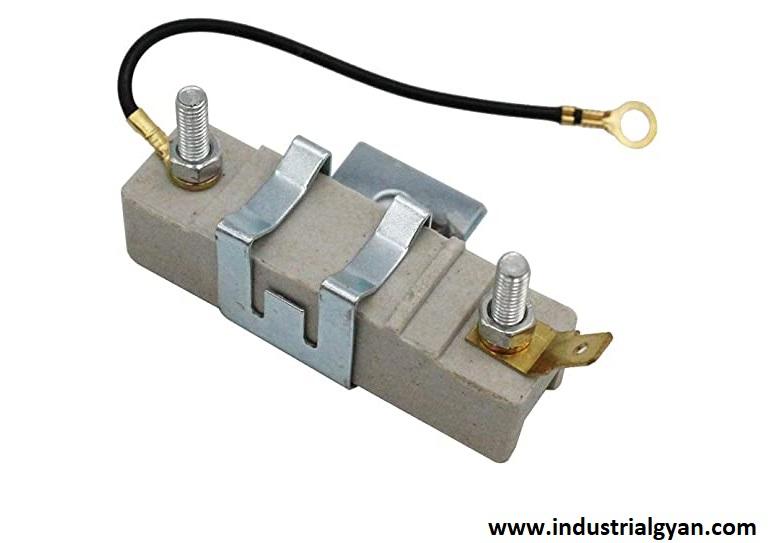Hello guys, Today we are discussing the ballast resistor with intensive detail and briefly covering the topic of working the resistor, the Application of the Ballast resistor, and the advantages and disadvantages of the ballast resistor.People use a ballast resistor to limit the current flow in a circuit. They commonly use it in automotive and electronic applications to control the amount of current flowing through a specific part of a circuit.
What is a ballast resistor?
A ballast electrical resistor limits the current flow in a circuit. People typically use it in automotive and electronic applications to control the amount of current that flows through a specific part of a circuit.
In the context of automotive applications, a ballast resistor is often used in the ignition system to regulate the current flow to the ignition coil. The ballast resistor reduces the voltage to the coil when the engine is running, which prevents the coil from overheating and prolongs its lifespan.
Electronics enthusiasts use ballast resistors to stabilize the current flow in a circuit by providing a fixed amount of resistance. LED circuits frequently incorporate them to limit the current flowing through the LEDs and protect them from damage caused by excessive current flow.

Ballast Resistors
Working of the ballast working
Another important application of ballast resistors is in electronic circuits that use LEDs. Specifically. LEDs are diodes that emit light when a current flows through them; however, they are also incredibly sensitive to changes in the amount of current that flows through them.
Consequently, too much current can cause an LED to overheat and become damaged. Conversely, too little current can result in a dim or non-functioning LED circuit often using a ballast resistor to regulate the current flow and safeguard the LEDs from harm. They place the resistor in series with the LED. Designers set the resistor’s resistance to limit the current flow to a safe level for the LED. They determine the resistor’s value based on the forward voltage drop of the LED and the desired current flow through the LED.

Ballast Resistors
Application of the ballast resistor
Here are some points related to the applications of the ballast resistor.
- Ignition systems:-As stated earlier, people use ballast resistors in automotive ignition systems to control the current flow to the ignition coil and prevent overheating.
- LED circuits:-People frequently use ballast resistors in LED circuits to restrict the current flow to a safe level and safeguard the LEDs from harm.
- Fluorescent lamps:- In fluorescent lamps. Ballast resistors are used to limit the current flow through the lamp and provide a consistent level of brightness.
- Electric heaters:-People use ballast resistors in electric heaters to regulate the current flow and prevent them from overheating.
- Power supplies:- Ballast resistors serve the purpose of limiting the current flow and ensuring a stable output voltage in power supplies.
- Electronic equipment:- Ballast resistors are used in various types of electronic equipment. Such as audio amplifiers and power supplies, to provide stable output and protect sensitive components from damage.
To calculate the voltage across the terminal
For calculation of the voltage across the terminal by
V = IR
- V = Voltage in a Volt (V).
- I = Current in (Amps).
- R = Resistance in (Ohms).
For more information, you can visit here braking resistor
Advantages of the ballast resistors
Here are some advantages of the ballast resistors.
- Current Regulation.
- Cost-effective.
- Simple design.
- Wide range of Applications.
- Durable
Frequently Asked Questions (FAQ)
Here are some frequently asked questions (FAQ) related to the ballast resistor:
- What is a ballast resistor?
People use a ballast resistor to regulate the current flow in an electrical or electronic circuit.
- What is the purpose of ballast resistors?
The purpose of ballast resistors is to regulate the current flow in a circuit and prevent damage to components due to excessive current flow.
- How does a ballast resistor work?
A ballast resistor works by limiting the amount of current that can flow through a circuit. Ohm’s law states that a voltage drop across the resistor that is proportional to the current flow accomplishes this.
- Where are ballast resistors used?
They are commonly utilized in automotive ignition systems, LED circuits, power supplies, and electric heaters. I.
- What are the advantages of using ballast resistors?
Ballast resistors offer several advantages to the circuits they are incorporated into. These benefits include the ability to precisely regulate current flow, cost-effectiveness, simplicity, versatility, and durability.
- Can a ballast resistor replace with another type of resistor?
Replacing ballast resistors with another resistor is sometimes necessary based on the specific requirements of a circuit. It is crucial to ensure that the replacement resistor is compatible with the circuit and can provide the same level of current regulation.
You can follow us on LinkedIn

I am a highly motivated and skilled individual with a passion for Electrical engineering. I have 1 year of experience in Robotics and Electrical engineering, which has allowed me to develop a strong set of skills in PLC, Painting Robots, SCADA. I am a quick learner and am always looking for new challenges and opportunities to expand my knowledge and skills. I am a team player and enjoy working with others to achieve a common goal. Successfully completed many projects for a various clients in the automobile sector.
Thank You

